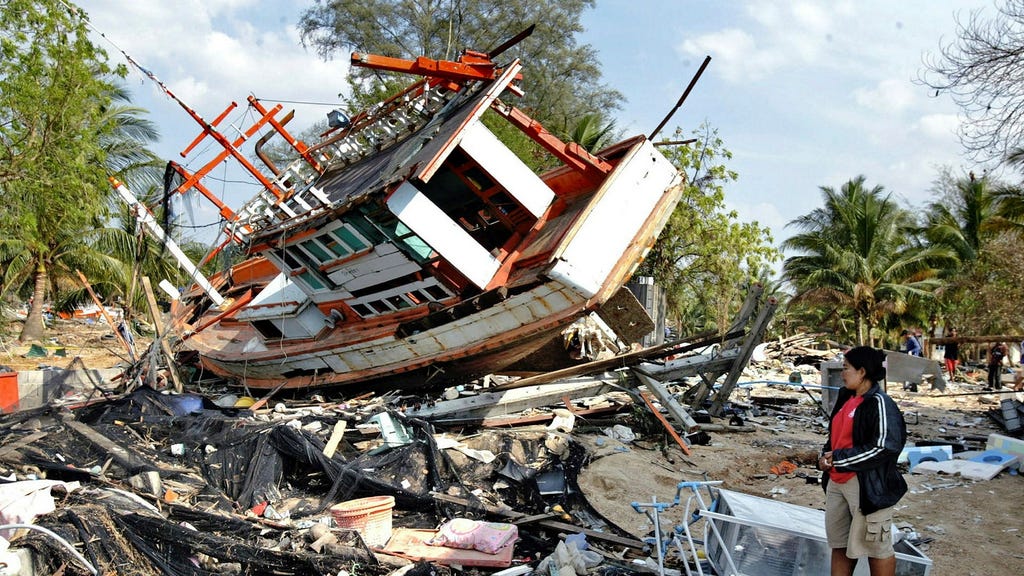The devastating 2004 Indian Ocean tsunami, triggered by a powerful earthquake off the coast of Sumatra, Indonesia, tragically claimed nearly 230,000 lives, etching its mark as one of the deadliest natural disasters in recorded history. The colossal loss of life highlighted a critical deficiency: the absence of a tsunami warning system for the Indian Ocean. The contrast with the Pacific Ocean, where a robust warning system had been in place since the aftermath of the 1960 Chilean earthquake – the most powerful ever recorded – and subsequent tsunami, underscored the urgent need for a similar system in the Indian Ocean. The Chilean earthquake’s devastating tsunami, reaching as far as Hawaii and Japan, had spurred the development of the Pacific warning system, a system that unfortunately had no counterpart in the Indian Ocean in 2004.
The impact of the 2004 earthquake and tsunami was catastrophic, particularly in coastal regions. Countries bordering the Indian Ocean, including Indonesia, Sri Lanka, India, and Thailand, were severely affected. The absence of a warning system meant that communities had little to no time to react to the approaching waves, often arriving with little or no warning. The sheer force and unexpectedness of the tsunami caused widespread destruction, sweeping away entire villages and causing unimaginable devastation. In Thailand, for instance, the tsunami waves arrived over an hour after the initial earthquake. Had a warning system been in place, this hour could have proved invaluable, allowing people to evacuate coastal areas and seek higher ground. The tragic loss of life in Thailand, as well as other affected regions, underscored the critical need for timely warnings.
Seismologist Björn Lund of Uppsala University emphasized the significant advances in tsunami warning systems since the 2004 disaster. The global response to the catastrophe led to a ”vigorous expansion” of these systems, marked by a substantial increase in monitoring stations, deployment of deep-sea buoys capable of detecting subtle changes in water pressure indicative of an approaching tsunami, and the implementation of sophisticated software to analyze data and issue timely alerts. These enhancements represent a crucial step towards mitigating the devastating impacts of future tsunamis. While predicting the exact timing of an earthquake remains an immense challenge, scientific understanding of seismic zones allows experts to identify areas at high risk.
The core principle of modern tsunami warning systems rests on rapid response. When a significant earthquake occurs in a high-risk zone, a tsunami warning is often issued immediately, even before confirmation of tsunami generation. This proactive approach stems from the understanding that tsunamis can travel at incredible speeds, reaching coastal areas within minutes. In the 2004 event, the first tsunami waves struck the Aceh province of Indonesia, just 20 minutes after the initial tremor. The swiftness of the waves underlines the importance of immediate warnings, maximizing the time available for evacuation and minimizing potential casualties. The tragic loss of over 167,000 lives in Indonesia alone highlights the devastating consequences of delayed or absent warnings.
The challenge of earthquake prediction persists, despite advances in seismic monitoring and data analysis. While scientists can identify high-risk areas and assess the time elapsed since the last major earthquake, pinpointing the precise time and location of a future event remains elusive. No reliable algorithms or general methods for earthquake prediction currently exist. Lund acknowledges the complexity of the Earth’s systems and the inherent difficulties in forecasting such events. He points to the ongoing debate within the scientific community, with some experts skeptical about the possibility of ever achieving accurate earthquake prediction. The immense variability and chaotic nature of the Earth’s processes present significant hurdles to prediction efforts.
Despite the challenges in predicting earthquakes, the strides made in tsunami warning systems since 2004 offer a significant improvement in disaster preparedness. The expanded network of monitoring stations, coupled with advanced technology and rapid response protocols, provide crucial time for evacuation, potentially saving countless lives in future tsunami events. While the exact timing of earthquakes remains unpredictable, the focus has shifted towards prompt detection and dissemination of warnings, mitigating the devastating impact of tsunamis. The advancements in warning systems, while not eliminating the risk entirely, represent a vital step towards protecting vulnerable coastal communities from the destructive power of tsunamis.














